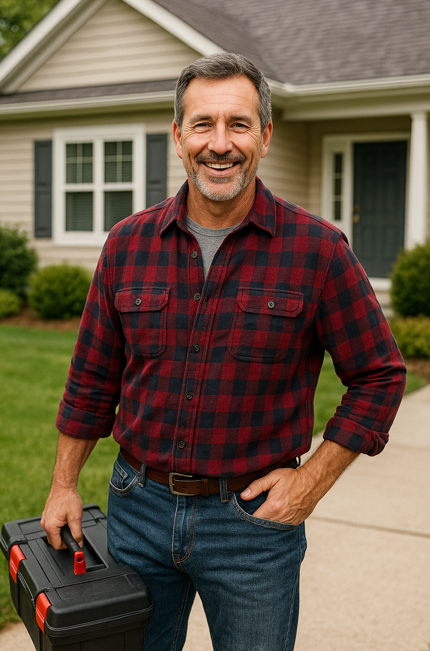Hey folks, Mike Sanders here. If you’ve ever been caught in a midsummer heat wave with an AC that just couldn’t keep up—or worse, failed altogether—you know how critical it is to have a cooling solution you can count on. Maybe you’ve been eyeing a 2 ton portable air conditioner or wondering if a full central unit is the way to go. Let’s break it all down with practical advice from someone who’s been around more air handlers and condensers than birthday candles.
This post is especially for homeowners trying to decide between quick fixes like portable units and long-term solutions like central air systems. Stick around and you’ll walk away with the confidence to choose the right unit for your needs.
What Is a 2 Ton Portable Air Conditioner?
When people talk about a “2 ton portable AC unit,” they’re usually referring to heavy-duty portable systems designed for large spaces like server rooms, workshops, or commercial areas. These aren’t your typical portable air conditioner outlet finds at the local big-box store—they’re powerful, industrial-grade units that require significant electrical capacity.
While they offer high BTU output (usually in the 24,000 BTU range), they often come with trade-offs. You’ll need:
-
A dedicated 220V outlet
-
Proper ventilation for the hot exhaust
-
A plan for drainage (they pull a lot of moisture from the air)
For most residential applications, even in a heatwave, these beasts are often overkill. Unless you’re cooling a garage that doubles as a home gym or workshop, you're better off exploring more efficient and permanent options.
👉 For a deep dive into what “2 ton” really means and how to match capacity to square footage, I recommend checking out this excellent explainer on HVAC sizing from the Department of Energy.
The Hidden Costs of Going Portable
One of the main draws of a portable air conditioner is convenience. You plug it in, run the hose out a window, and boom—you’ve got cold air. But in real-world use, a 2 ton portable air conditioner can come with drawbacks:
-
Inefficiency: Even top-rated models struggle to match the cooling efficiency of ducted systems. SEER ratings on portables are usually far lower.
-
Noise: These units are louder since the compressor is inside your living space.
-
Energy use: Higher utility bills are common, especially if your unit isn’t ENERGY STAR certified.
Plus, unless you’re buying a dual-hose model, you might be creating negative pressure in your room—pulling in hot, humid air from elsewhere in the house.
For folks who care about long-term efficiency and indoor comfort, it’s worth considering a system that gives you more bang for your buck over the years.
If you’re curious how ENERGY STAR views portable vs. central systems, they’ve published a handy energy efficiency comparison guide worth reading before you click “buy now.”
When You Should Consider a Permanent Solution Instead
Let’s say you’re cooling more than just a single room, or you’re tired of dragging a portable unit from room to room each summer. That’s when it makes sense to look at a fixed, high-efficiency system—like a central air conditioner and air handler bundle.
For instance, a properly sized 3-ton unit like the Goodman 3 Ton 14.5 SEER2 R-32 System can quietly and efficiently cool a home of up to 1,800 sq. ft. With R-32 refrigerant, it also runs cleaner and cooler than older models using R-410A. Plus, it pairs seamlessly with a variable-speed air handler for consistent airflow, humidity control, and lower operating costs.
Compare that to running two or three portable units throughout the house (each burning 1,200+ watts an hour), and the math starts working in your favor—especially over five years.
Need help figuring out if 3 tons is right for your home? I recommend using this BTU calculator from PickHVAC to get a better idea of what you need.
What About Ductless Mini Splits?
Okay, I hear you. You’re not sold on central air, but you still want something more permanent than a rolling noise machine. That’s where ductless mini splits shine.
These systems are:
-
Wall-mounted
-
Highly efficient (SEER2 ratings of 20+ aren’t uncommon)
-
Great for room-by-room zoning
They’re especially good for add-ons, garages, or bonus rooms where extending ductwork just isn’t practical. But for whole-home cooling, you’re still looking at higher upfront costs and multiple heads to get even coverage.
Need to see what installation involves? Family Handyman has a helpful ductless system installation overview to walk you through it.
Final Thoughts: What I’d Recommend
If you're trying to cool a large space and you’re tempted by a 2 ton portable AC unit, take a beat. These machines can do the job—but they often do it loudly, expensively, and temporarily.
If you’re staying put in your home and want:
-
Lower monthly bills
-
Better dehumidification
-
More comfort
-
Less noise
...then it’s time to consider investing in a high-efficiency central AC system like the one I mentioned earlier. You’ll spend more upfront—but the long-term value is night and day.
Still not sure? Do what I tell most of my friends: run your numbers through the EnergyGuide cost calculator and compare. Once you see how quickly the payback comes with a high-efficiency setup, it becomes a no-brainer.
—
Until next time, keep it cool.
– Mike Sanders







